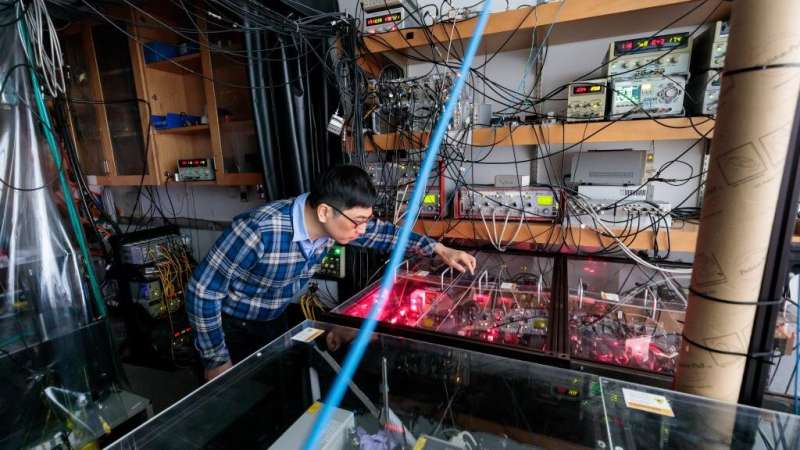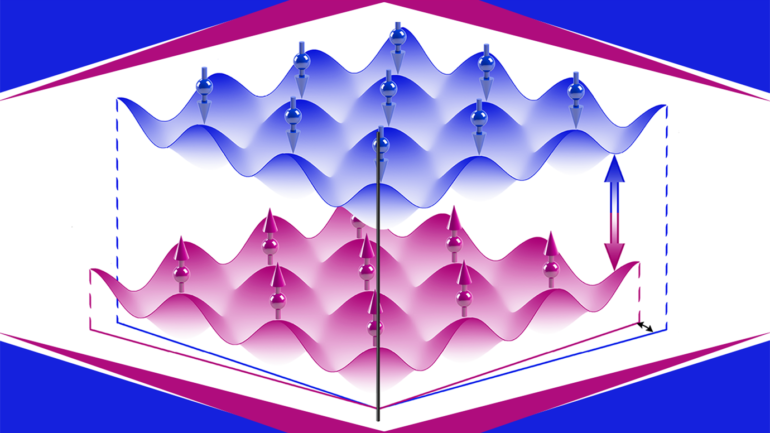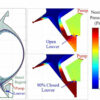Scientists with the University of Chicago and Shanxi University announced they have created a way to use lasers to “simulate” a material that physicists have been drooling over for its potential technological applications for years.
The new method can be used to better understand how the material—known as a twisted bilayer lattice—works, and could perhaps point the way to new electronics or quantum technology. The work was published in Nature.
A twist on tradition
Four years ago, scientists at MIT discovered a surprise twist: Thin sheets of ordinary carbon atoms can become a superconductor if you twist the sheets as you stack them.
Superconductors are a rare kind of material that is able to conduct electricity perfectly, with no loss at all. Scientists and engineers can dream up all sorts of uses for superconductors—they’re already the basis of MRIs—but they have significant limitations, including having to be cooled down below zero to work. Scientists hope that if they can fully understand the physics principles at play, they could design new superconductors that unlock all sorts of technological possibilities.
“Whenever anyone discovers a new class of superconductor, the physics world sits up and takes notice,” said Cheng Chin, professor of physics at the University of Chicago and a co-author on the new study. “But this one was especially exciting because it was based on such a simple and ordinary material as graphene.”
Graphene is about as simple as a material can get: it is a thin lattice of carbon atoms. Scientists leapt to explore possible applications, sparking a flood of research into a new field christened twisted electronics, or “twistronics.”

Prof. Cheng Chin adjusts the optics in his laboratory at the University of Chicago. New research by UChicago and Shanxi University discovered a way to simulate superconductivity in twisted bilayer lattices. © John Zich/University of Chicago
But despite how simple graphene is in some ways, it turned out to be somewhat difficult to study how it can superconduct when stacked in these twisted sheets. For example, scientists want to rotate the sheets in tiny increments and see what happens to the properties each time; but graphene sheets tend to stick to each other and will tear if they’re moved.
Chin’s lab and the Shanxi group had previously designed ways to replicate complicated quantum materials using cooled atoms and lasers in order to make it easier to study—so they thought they could do the same for the twisted bilayer system.
Working with researchers at Shanxi University, the team designed an innovative way to “simulate” these twisted lattices.
They took atoms of an element called rubidium, cooled them down, and used lasers to organize them into two lattices, one on top of the other. Then, to help the two lattices interact with each other, the scientists applied microwaves.
This combination did the trick. The material displays “superfluidity”—a property similar to superconductivity, in which particles can flow through it without being slowed down by friction. Using the system, the researchers observed a new form of superfluid in the atoms, thanks to the ability to adjust the twist angle of the two lattices.
By altering the strength of the microwave, the scientists found they could control how strongly the two lattices interacted. Meanwhile, they could easily rotate the two lattices with the lasers.
“This makes it a very flexible system,” Chin said. “For example, some people have wanted to explore moving beyond two layers to three or even four. That’d be easy to do with our setup.”
By using the new setup to explore these twisted bilayer lattices, scientists hope to enable breakthroughs for new materials for electronics or ways to control information in quantum technology.
More information:
Zengming Meng et al, Atomic Bose–Einstein condensate in twisted-bilayer optical lattices, Nature (2023). DOI: 10.1038/s41586-023-05695-4
Provided by
University of Chicago
Citation:
Scientists use lasers to recreate ‘twisted’ superconducting material (2023, March 21)



